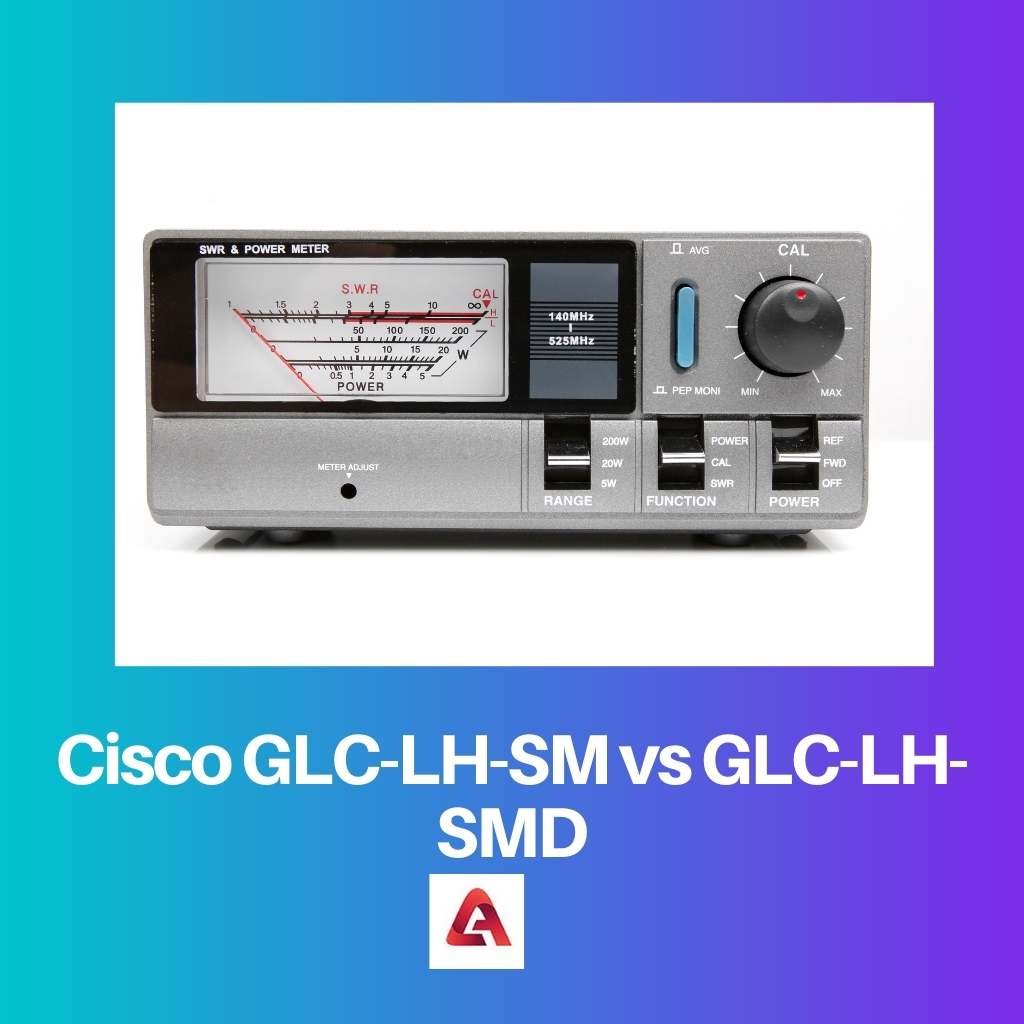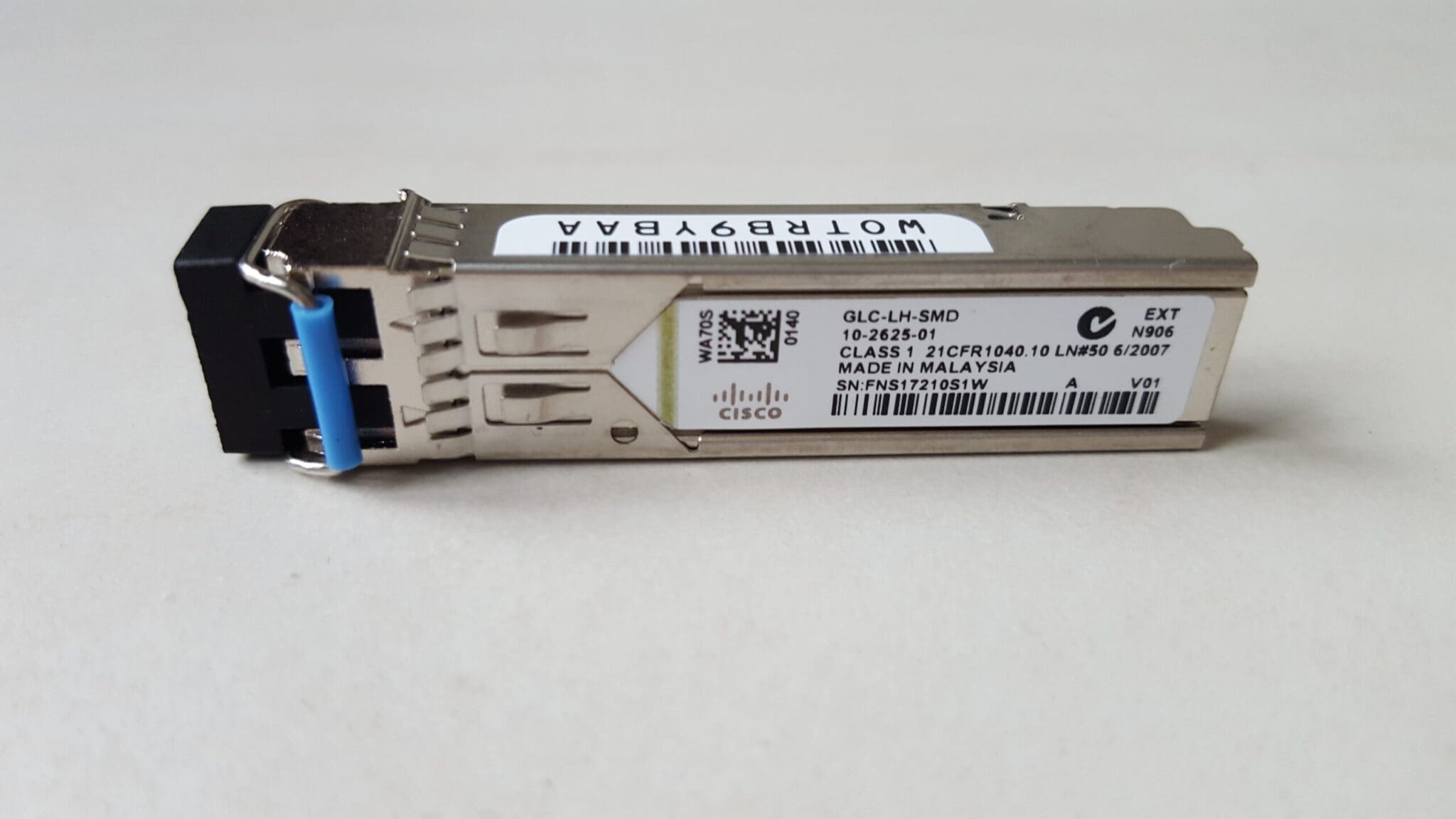Routers and transistors have been in use since the explosive growth of technology. Along with them came another gadget that helps transmit wavelengths of information and data.
It was called a transceiver. Some examples of the transceiver are GLC-LG-SM-RGD, GLC-LH-SM, GLC-LH-SMD, etc. They are types of SFP transceivers with their modules available for the manufacturer switches.
Key Takeaways
- Both are Gigabit Ethernet SFP transceivers with a 1310nm wavelength and a maximum range of 10km.
- GLC-LH-SMD has a built-in Digital Optical Monitoring (DOM) feature, while GLC-LH-SM lacks this capability.
- GLC-LH-SMD provides real-time monitoring of transceiver parameters, whereas GLC-LH-SM does not support this functionality.
Cisco GLC-LH-SM vs GLC-LH-SMD
The Cisco GLC-LH-SM is a hot-swappable input/output device that plugs into a Gigabit Ethernet port, linking the port with the network. The GLC-LH-SMD version of the same transceiver comes with an additional feature: Digital Optical Monitoring (DOM) support that allows viewing of real-time operating parameters.

Cisco GLC-LH-SM is a transceiver manufactured by the Cisco unit of digital hardware that works as a combination of a transistor and receiver, hence the combination name transceiver.
It was one of the first generations of transceivers manufactured by the Cisco group that eventually faded out of the market. But there are still users who use the GLC-LH-SM version at homes or offices.
Cisco GLC-LH-SMD is another kind of transistor-receiver combination manufactured and marketed by the Cisco groups to help business outlets with the conversion of electric and optical signals to one another, thereby creating a non-readable communication channel between multiple units.
This can be considered as the second generation of transistors released by Cisco. It is the more commonly used transceiver.
Comparison Table
| Parameters of Comparison | Cisco GLC-LH-SM | Cisco GLC-LH-SMD |
|---|---|---|
| DOM Compatibility | Absent | Present |
| Optimum Operation Temperature | 0-70 degree C | -5-85 degree C |
| Sale Ended in | 2013 | Not yet |
| Market Value | Less | Higher in comparison |
| Is Storage Applicable | No | Yes |
What is Cisco GLC-LH-SM?
The transceiver gets its name from the transistor and receiver that is installed in the device.
GLC-LH-SM is a 1000BASE LX/LH small form of the originally designed device that had to be altered layer to fit the pocket size user-friendly device nature preferred by the users.
It is a factor-plugged transportation module type manufactured by Cisco for MMF and SMF. Its connection portals include a dual connection method that is aligned with LC/ PC connectors.
This kind of connection is called a Duplex LC connector, irrespective of the connection point. GLC-LH-SM has a standard 1310nm wavelength optimum for electric and optical signal recognition and transmission.
With a data transference rate of approximately 1 GB/s, it can cover a minimum distance of 10cm, given the environmental conditions are favourable. Being a prototype model of the transceivers from Cisco, it doesn’t feature the DOM (digital optical monitoring).
DOM is used by transceivers with the hope of creating an interface that can access many optical parameters that prove helpful in digital and optical transmissions. This is a major drawback of the first generation of transceivers.
It’s compatible with all the later models released by Cisco and comes at a lower price. GLC-LH-SM, when in use, is in need of model coupling to complete its required use.
The optimum temperature range for GLC-LH-SM to operate in all its glory is 0-70°C. Temperatures above or below this are considered to reduce the transceiver’s activity, rendering it useless.
The efficient voltage needed by GLC-LH-SM is around 3.3 volts and applies to the classic transceiver 1000BASE LX/LH Ethernet Or Gigabit Ethernet.
GLC-LH-SM transceivers stopped their market products in the year 2013. But there are still users who use it despite it going out of trend.
What is Cisco GLC-LH-SMD?
GLC-LH-SMD is the second generation of transceivers introduced by Cisco manufacturers. It is completely compliant with IEEE version code 802.3z, which brings the transceiver under the BASE standard of 1000 LX.
Like all transceivers, it uses optical monitoring with digital elements that help in transferring the signal type from one to another. It has a staggering wavelength transmission of about 1300nm that can cover up to a distance of 10km.
The single-mode fibre (SMF) used in GLC-LH-SMD helps it gain a transmission reach of about 10km compared to a standard transceiver’s 5km transmission capacity. The data transferring speed of GLC-LH-SMD can be as high as 1G.
Like almost all other transceivers with different versions available, even the GLC-LH-SMD has a duplex connector that comes in the LC model. The dual LC/PC connector ports that it is equipped with provide a huge advantage to the connection points.
Its most attractive and user-friendly element is its compatible nature with DOM, enhancing its optical activities and digital reading capabilities. DOM is to create better additional support for optical monitoring.
It is compatible with most other transceivers that are available in the market from the Cisco manufacturers. Despite its good features and compatibility, it is rather expensive when compared to all other transceivers, thereby keeping off buyers.
The operating temperature required by the GLC-LH-SMD is -5° – 85° C. Any temperature above or below reduces the functional aspects of the transceiver.
The transmitter in the transceiver uses a DFB laser service to transfer the optical signals converted to electrical ones. GLC-LH-SMD can be applied in many terms, such as storage and IP networks along with the networks such as LAN, WAN, and MAN.

Main Differences Between Cisco GLC-LH-SM and GLC-LH-SMD
- While the optimum temperature at which GLC-LH-SMD can be operated starts from a negative value of -5°C to 85°C, the temperature required by GLC-LH-SM is comparatively less and ranges from 0-70°C.
- GLC-LH-SMD has an Ethernet BASE capability of 1000 LX, whereas GLC-LH-SM has a BASE factor of 1000BASE LC.
- GLC-LH-SMD is still in use and in demand in the market today, but GLC-LH-SM has been cleared out of the markets, and sales stopped as the manufacturing and brought down in 2013.
- GLC-LH-SM has no DOM compatibility, therefore, lacks advanced digital optical data monitoring. On the other hand, GLC-LH-SMD is DOM-compatible and has an enhanced optical monitoring ability.
- The older version of GLC-LH-SM is less expensive due to its lack of later technological features, but GLC-LH-SMD is more expensive and sought after by users due to its upgraded features.


